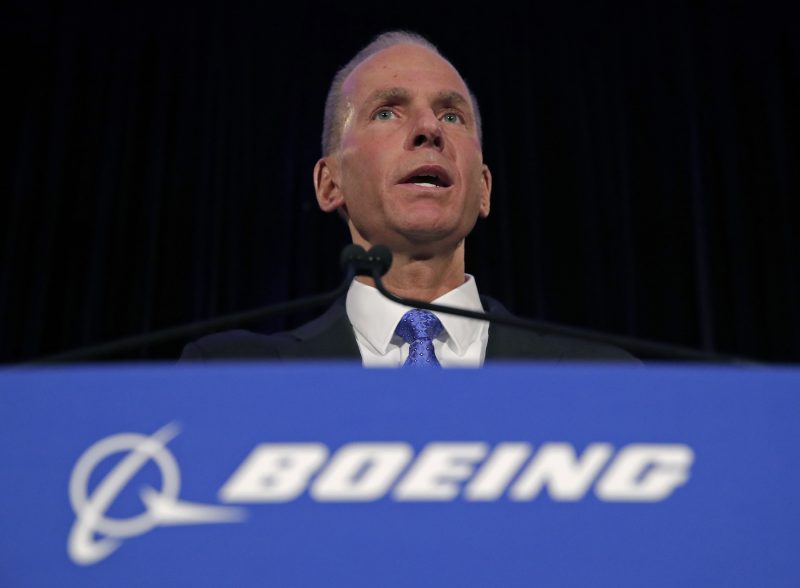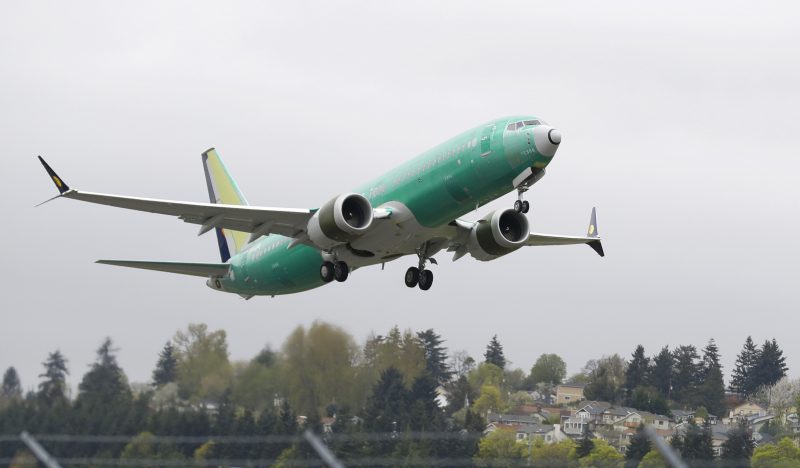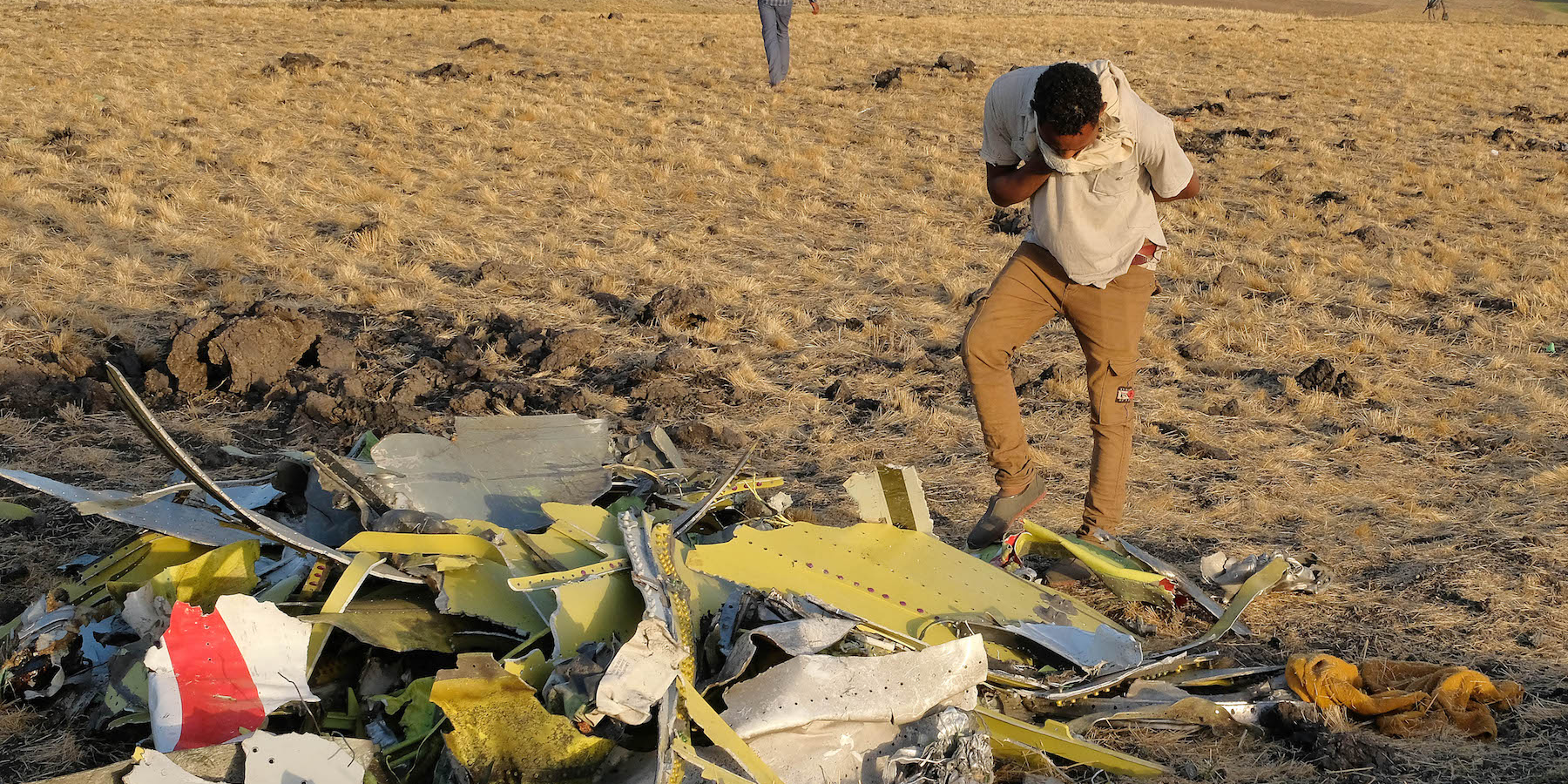- Boeing’s CEO contradicted investigators Monday when talking to shareholders about the fatal Ethiopian Airlines crash involving one of Boeing’s 737 Max aircraft.
- CEO Dennis Muilenburg said pilots did not “completely” follow emergency procedures, though investigators said in their preliminary report that the crew “repeatedly” followed Boeing’s procedures and still couldn’t control the plane.
- The preliminary report did not say whether the pilots may have taken additional steps alongside Boeing’s procedures that could have prevented them from gaining control of the plane.
- While Boeing defended the design of the 737 Max and said there was not a “technical slip or gap,” it did pledge to make the aircraft safer.
- Visit Business Insider’s homepage for more stories.
Boeing’s CEO on Monday said the pilots in the fatal Ethiopian Airlines crash involving a Boeing 737 Max aircraft did not “completely” follow the manufacturer’s emergency procedures – a different conclusion from one relayed publicly by crash investigators.
Dennis Muilenburg, Boeing’s CEO, made the assertion Monday when addressing shareholders at the company’s annual meeting in Chicago, contradicting an initial investigation into the crash that found the Ethiopian Airlines pilots had followed Boeing’s procedures.
Muilenburg also vouched for the plane’s design and said there was no “technical slip or gap” in building the planes.
He said the 737 Max’s automated MCAS anti-stall software, which is at the center of two investigations of recent fatal crashes involving the plane, met the company’s safety criteria.
Muilenburg said all systems designed by Boeing were developed with the understanding that "these airplanes are flown in the hands of pilots," CNN reported.

Boeing has not tried to absolve itself completely from blame for the crashes - Muilenburg previously apologized for the disasters and acknowledged that a sensor had malfunctioned during both incidents.
But Muilenburg's statements on Monday shift the focus onto the pilots in a way that contrasts with the stance of investigators, who said in a preliminary report on the investigation into the crash that the Ethiopian Airlines pilots had followed Boeing's procedures while trying to stop the plane from crashing.
Ethiopia's transport minister, Dagmawit Moges, said the plane's crew "performed all the procedures repeatedly provided by the manufacturer but was not able to control the aircraft."
Ethiopian Airlines said in a statement after the report: "The preliminary report confirmed beyond reasonable doubt that the crew followed the right procedures."
This first report into the investigation, which is being aided by the US National Transportation Safety Board, had turned the focus onto Boeing and the design of the 737 Max.

The preliminary report did not say whether the pilots may have taken additional steps alongside Boeing's procedures that could have prevented them from gaining control of the plane.
Analysts and pilots told Reuters after the release of the preliminary report that some of the steps taken by the pilots were unusual, including leaving the plane at full takeoff power.
Boeing has also come under fire for the way it trained pilots to use the MCAS software. Cockpit voice recordings outlined to Reuters revealed that the Ethiopian Airlines pilots frantically read an through emergency handbook to try to find a way to control the plane as it plunged toward the ground.
The software was designed to compensate for changes in the design of Boeing's 737 Max 8 aircraft that would otherwise have made it handle differently for pilots than previous models did. It was meant to automatically push down the aircraft's nose if it detected conditions that might result in a stall, but it used data from only a single sensor, meaning a problem with that sensor could cause the software to incorrectly push the nose down.
On Monday, Muilenburg explained why Boeing did not disclose the existence of the system to pilots, saying the system is "fundamentally embedded in the handling qualities of the airplane," so "when you train on the airplane, you are being trained on MCAS."
"It's not a separate system to be trained on," he said.

While defending the plane's design and pilot training, Muilenburg said the company was working to make the 737 Max safer. Boeing is updating the software system, and the planes will not be allowed to fly again until the US Federal Aviation Administration and other regulators around the world approve the fix.
Muilenburg said the plane would be one of the world's safest when it returned, adding that he would take a flight on a 737 Max as soon as the aircraft is cleared to fly again to prove his confidence in the aircraft. He repeated his assertion that the company would work to "earn and re-earn" the trust of the flying public.
During the meeting Monday, Muilenburg also survived a challenge to his role as joint chairman and CEO of the company. Shareholders rejected a resolution that would have stripped Muilenburg of Boeing's chairmanship and installed an independent chair.

